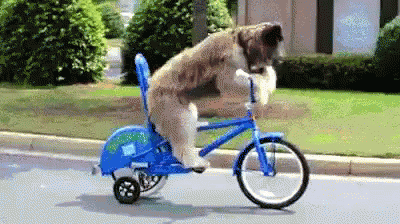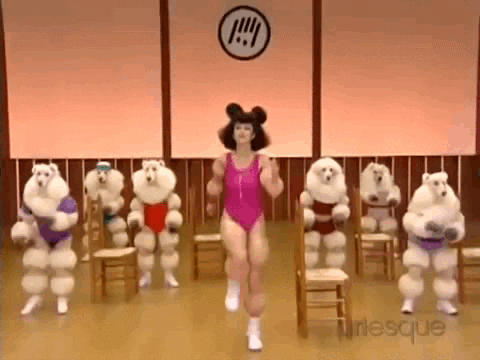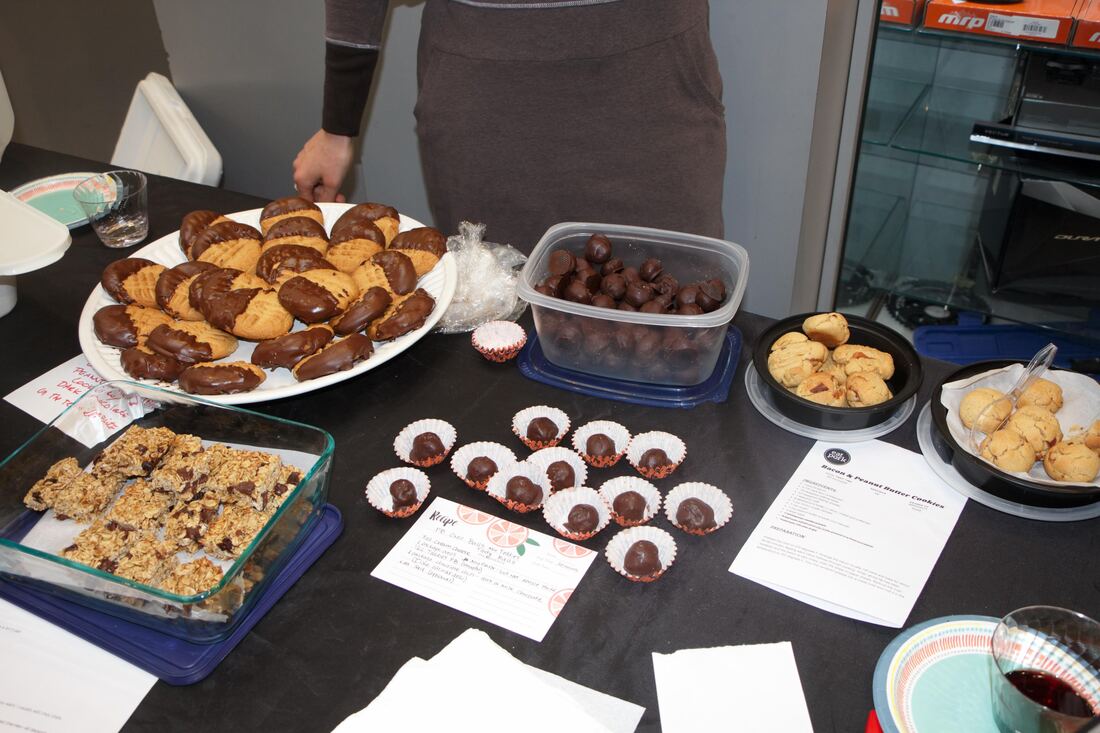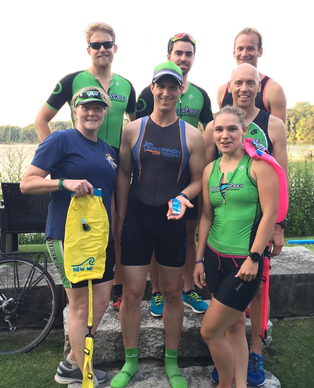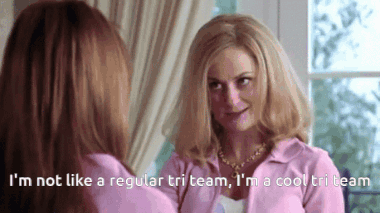|
With training events and races getting cancelled left and right, it’s easy to feel unmotivated. But, now is the perfect time to reflect on your accomplishments and goals, build up your strength and endurance, give your body some TLC, and do all those PT exercises you were supposed to be doing all along. Plus, the living room is a great place to practice transitions! See below for some ideas and resources to keep you tri-ing. FitnessStrength exercises & suggestions from Coach Will of Tri-Hard
Yoga
Dry Land Swimming Exercises
Cycling Workouts
Running Workouts
Workouts for when you REALLY need a change of pace:EntertainmentPodcasts
JamsSome teammate-created Spotify playlists to pump up your workouts! Reads
Other ActivitiesBike MaintenanceWheelworks is still open, by appointment only. Drop your bike off for a tune-up or pick up some extra accessories. CookingCheck out our new WWMS team recipe book here, and please feel free to contribute your own favorite recipes! CraftsShoppingIf you are able, now may be the perfect time to do a little online shopping and support our wonderful sponsors. Several of them are local businesses and may be especially struggling from the current closures. Discount codes are available for teammates via our website. Staying ConnectedIsolation can feel very, well, isolating. Below are some ways you can stay connected with teammates from a distance.
Covid-19 has turned our world upside and is affecting people in many different ways. For most of us, triathlon is not at the top of our priority list at the moment. However, it is encouraging to see the support this community has shown for one another during this difficult time. I am proud of our team for doing our part to stay at home and flatten the curve, as difficult as it may be. I hope that this guide can provide a small respite from the worry we are all feeling and a reminder that you are not alone! Be well 💚 It’s no secret: triathletes love gear. The sheer volume of products out there can feel overwhelming, but not to fear! We asked our most trusted experts - the members of WWMS - to share their favorite products with you. Get ready for some serious wishlist inspiration! 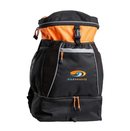 Favorite race day essential: Blueseventy Transition Bag Every triathlete needs a good transition bag, and teammate Jon Chesto sings the praises for this particular pack. “The Blueseventy transition bag is essential. Kind of amazing I lasted as long as I did in the sport without it. You can wear it like a backpack, for those annoying times you need to bike to the start. There are pockets for everything -- helmet, shoes of various sorts, ID cards, nutrition, even more pockets. The best feature though is the waterproof section at the bottom for your wetsuit and other smelly stuff.”  Favorite tech for data-driven training: Stryd Footpod What exactly is a footpod? Teammate Shannon Little describes it for us: “Very lightweight, water resistant and clips to your shoelace. It measures everything about how you run, from cadence and pace to leg spring stiffness and time spent with your foot on the ground. It measures power and gives recommendations on power output based on all your previous data and current race distance - same as cycling with a power meter - so you can stay consistent on hills, long runs, etc. and you won’t burn out. It connects to most training watches too so you can get your data off your watch in real time, run with your phone, or if you’re a minimalist you can sync it offline when you’re finished. It also connects to Zwift so you can make the treadmill runs more fun. Highly recommend.” 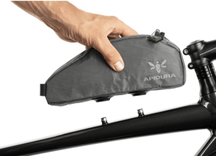 Favorite bike accessory: “Bentobox” aka top tube bag: (check out Wheelworks’ selection here!) Teammate Alyson Fletcher recommends adding one of these handy packs to your bike for easy access to fuel and extra room for other essentials. What to fill it with? That’s easy - Clif Bloks in every flavor! Her faves are tropical punch, ginger ale, salted watermelon, or cran razz. (Teammates, don’t forget about our Clif discount - we love our sponsors!) 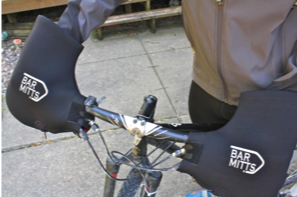 Favorite cold weather biking gear: Bar Mitts Many of our intrepid teammates cycle year-round; given that we live in New England, let’s pause for a moment to bestow the highest of kudos to those people. For winter riding, teammate Alyson Fletcher recommends Bar Mitts - they attach directly to handlebars and are weather-proof, toasty warm, reflective, and give you flexible access to brakes and shifting. A must-have! 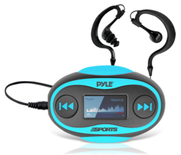 Favorite swim training companion: Pyle Underwater MP3 player/headphones Our team president Amy “Thurbs” Moody recommends an underwater MP3 player and headphones so you can jam out to tunes during your lap swim workouts. “These rely on a seal to prevent water from getting between the speaker and your inner ear...they don’t always work perfectly, but for the price ($40) and only sounding a little muffled if water does work its way in, I think they’re worth it! There is a catch: music has to be MP3 format, but with just a little internet searching you can easily convert songs from Spotify.” This calls for an official team playlist! 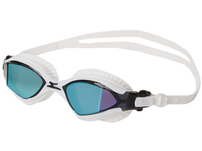 Favorite open-water goggles: Speedo MDR 2.4 Polarized This recommendation comes from one of our experienced open water swimmers, teammate David Bentey. The polarized lenses help eliminate glare, even in strong sunlight, and the wide field of vision makes sighting a breeze with these bad boys. 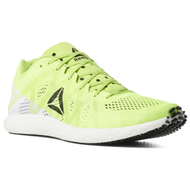 Favorite running shoe: The Reebok Floatride Run Fast Pro Teammate Jon Chesto admits that these shoes are a splurge, but as some of the lightest and fastest shoes on the market he deems them well worth it. (And with his level of running experience, we believe him!) “They share the same kind of foam as the Nike Vaporflys, and I prefer them for short distance tris (5Ks and 10Ks). No need to wear lacelocks or other tomfoolery. I just leave one set of holes open at the top, and there's enough room for me to wriggle my feet in there during T2, super fast. I find them equally as comfortable as "tri specific" shoes, if not more comfortable. 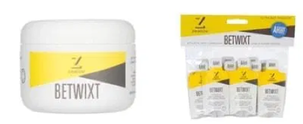 Favorite body product: Anti-chafing glide: (we love Zealios’ Betwixt) Let’s face it: chafing happens. That’s why teammate Alyson Fletcher recommends glide as an essential part of the tri kit. For biking-specific areas, think Zealios (another sponsor we love!). As a bonus, Alyson has found glide to be helpful for preventing blisters in your work shoes and snow boots too! Happy shopping and happy holidays, athletes!
Aren’t the three sports and varying distances that make up triathlon enough? For most of us mere mortals, yes. But an intrepid few scream into the void: “is that all you’ve got?!” and seek out challenges beyond the norm. (Disclaimer: I’m not sure if they actually screamed, or faced any sort of void - just my artistic interpretation.) Some particularly interesting events on this year’s team race calendar piqued my curiosity and left me needing to know more. Join me on a deep dive into these unique multisport challenges and the stories of our kick-butt teammates who have completed them. 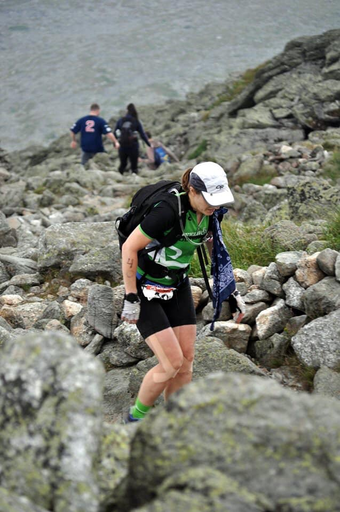 Sea to Summit featuring teammate Carole Harbison What it is: a self supported 1.5 mile tidal river swim, ~92 mile point to point bike ride with 5000 ft of climbing (2000 net gain), and a 5.5 mile run/hike up Tuckerman Ravine (4400 ft climbing) to the summit of Mt Washington, the highest point in the NE. Okay wow. What made you sign up for this? Carole says “I wanted an unusual challenge this year, something different than the matchy matchy spandex/bright lights glamour of the IM branded races (don't get me wrong, those are fun too). This is a mom and pop operation with very laissez faire execution-- a small field of <100 racers, no set bike course, no T2, no aid stations on the course, no finishing chute, basically no bells and whistles at all. Don't worry though, there's still a T shirt.” Training and race details: She notes that her training for this was actually fairly similar to that for a regular IM race, with the exception of a lot more hiking/climbing instead of regular marathon run training. She did a lot of biking and hiking in the White Mountains, helping her prepare for all that elevation gain. Extra gear included a hiking backpack with some mandatory safety supplies and trail running shoes. Any special challenges or surprises? Carole tells us she felt “hyper-prepared” for this race. “Having done two race rehearsals on the bike and hike course, fortunately I was able to have an ‘easy’ day executing what I'd trained for without too many surprises. The most challenging part was actually for my porter, who was responsible for handing off nutrition to me on the bike and a lot of other support activities. He had a heck of a time navigating the other 99 porters on the road and the other racers themselves, and may have actually had a harder day than I did. Having a great porter is key!” 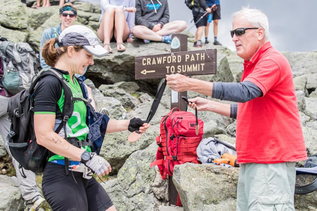 Conclusion: Carole absolutely loved this race. “The scenery of NH and the white mountains is beautiful, and there's no better moment than ascending the last bit of the summit, looking all the way back toward the valley where you started that morning. The quirks are just part of the experience--the swim buoys were still being set up 5 minutes before the start, there were no timing chips so no way to measure transition times, it took a couple weeks to get results, etc. But honestly those things were a great reminder to not take the whole thing too seriously, and to just go out and have a fun day racing.” She recommends this race for anyone who can qualify and who really likes biking on hills and hiking. She also offered to serve as training buddy, porter, or participate in a future WWMS relay team...so mark your calendars for July 25, 2020! Congratulations to Carole for being the 4th overall woman finisher! You can read Carole’s full race report here. 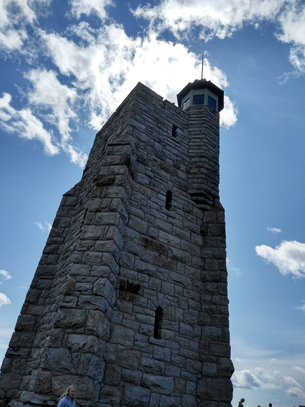 SOS (Survival of the Shawangunks) featuring teammate Jon Chesto What it is: The website describes this as an “eight stage wilderness adventure triathlon race,” but Jon paints us a much clearer and more vivid picture of his experience doing SOS New York: “We start just as the sun was starting to rise over the Hudson Valley, at an empty fairground, all 200 of us assembling in the cool morning shadows. The stone Skytop Tower looms over us in the early-morning light, off in the distance, our final destination. We all know we have 50 miles of hard biking, running and swimming to get there. The horn sounds, and we’re off, jockeying with other riders for position in our age group, while staying far enough away from each other to avoid a drafting penalty (in this race, the ref points at you and tells you to stop and unclip). We ride through a beautiful countryside: ravines, waterfalls, cliffs, sunflowers as tall as houses. The lead pack from my wave leaves me in the dust in the first major downhill. But the final climb is five miles long, uphill into the heart of the Gunks, and my lack of a tri-bike suddenly becomes an advantage, as I start passing competitors from my wave, as well as younger racers, one by one, before pulling into the first transition area. The first trail run is 4.5 miles long, but this one feels much longer. The reason? It’s almost all uphill, including a mean bastard called Cardiac whose grade reaches 20 percent in parts. Rules require us to carry everything we need for the rest of the race, so I’ve got three gels in my shorts pockets, and a swim cap and goggles in my hands, as I climb. I see no runners, though I hear one gaining on me. Better pick it up after cresting Cardiac. I worry a bit that I’m not passing anyone. Then I find out I’m in 12th as I approached the first lake, and take it as a good sign. The first swim is the toughest, 1.1 miles in frigid water (low 60s). We’re two hours in, so fatigue is already setting in a bit. I stuff my shoes into my green tri top, and hop into the water. I pass a few swimmers at the outset, but then, more loneliness. Getting back on land is hard - I foolishly take a well-meaning volunteer’s advice and sit on a bench-like rock to put on my shoes. Wrong move. The muscles along the back of my legs, hammies and calves, start to seize up at once. Painful and scary. Won’t be doing that again. The next run, 5.5 miles mostly along a ridge line, is the most scenic. You can see for what seems like hundreds of miles. I get into a groove here. It helps I have someone to run with, finally. With my legs still sore from those cramps, I decide it makes more sense to run with him than to try to pass at this point. The second lake is a half mile sprint. I think I pass two more people here but the rock-pile climb on the other side is tricky. Then it’s on to the longest run of the day, a grueling 8 mile stretch through some beautiful forestland and ledges teeming with rock climbers. The final two miles are all uphill — the infamous Godzilla Hill, far worse than Cardiac in length, if not grade. I catch up with someone who is walking for a bit. Turns out he is in fourth place. We offer each other some words of encouragement, then he hangs with me and beats me into the final lake — which, to my surprise, requires you to slide under a wooden fence to enter. 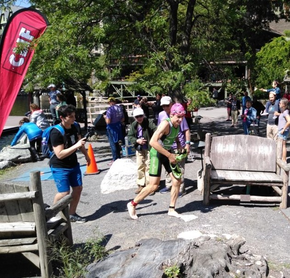 The final push is the most exciting: A swim through this glacial pool, past ancient rock formations and the majestic Mohonk House. It’s a hotel, but looks like a castle. The guy in fourth place keeps his shoes on, so I pass him with my shoeless feet and then clamber up another rock wall to get out for the final 0.7 mile climb to Skytop. (Had to cram my shoes back on, of course.) You feel like you are on top of the world when you cross that “survivor line” — it sure looks that way, too. The views are incredible. I instantly start shivering, but race CEO Evan Davis warms me up with a cup of soup. My dad surprises me by making the climb as well. Then it’s off to the massage tent to work out those cramps and reflect on five hours of joy and misery.” How was your training for this race different than training for a regular triathlon? Did you need any extra gear? Jon says he did several OWS-trail run bricks to prepare, but thinks it would have helped to have done even more. He also highlights the importance of experimenting with footwear: finding a shoe that works (he opted for quick-drying Zoots) and trying out swimming with shoes versus without (he preferred swimming without shoes to keep his kick strong). Nutrition included Clif Bloks and Skratch hydration on the bike, and gels and sports drinks through the rest of the course. 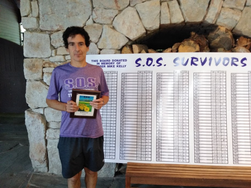 What was the most challenging part of this race? “Dealing with those muscle cramps. You expect them, but you also hope you’ve done enough training to avoid them. Those cramps after the first swim were a bit frightening, with three hours left in the race, though the pain in the back of my legs receded as quad pain took over. The eight-mile run was particularly brutal — my quads felt like they do in the final stretch of the Boston Marathon. It did not help matters that the only paved part of the run is a screaming mile-plus descent after the swim.” Sounds painful! What were the enjoyable aspects of this race? “Seeing those views from Castle Rock (the second run) is like nothing else in any other race I’ve done. I was in awe of the splendor. The swim-run combo at the end is pretty incredible too, the adrenaline really arrives here in anticipation of the finish.” Who do you think would enjoy trying this type of race? “Anyone looking for a different challenge from the typical swim-bike-run thing. Just don’t expect it to be easy. This race is the toughest triathlon I’ve ever done — much more challenging than a typical 70.3. But so rewarding, too. One of a kind. It’s two weeks since I crossed the finish line, and I’m still kind of riding on that endorphin high.” Congratulations to Jon for completing SOS Cape Cod in June and SOS New York in August, placing top 10 in both! 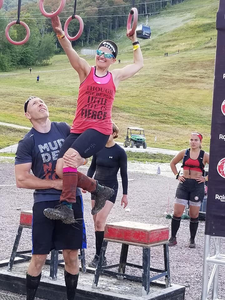 Spartan Obstacle Course Race featuring teammate Kristi Paradis What exactly is an “obstacle course race?” Kristi explains: “OCRs consist of upper and lower body challenges and running or hiking between obstacles. Examples of obstacles include heavy carries (sand bags, buckets) over often difficult terrain, monkey bars, rings, 6-9 foot walls, tire flips, and mud. Distances vary from 3 miles to over 26.” That seems really hard. Kristi sees it as a new way to challenge her body and mind. “This is a non Ironman year for me. I've been racing long distance triathlon for ten years now. A few years ago I burnt out of the sport and lost my love for it. I found it again, but don't want to fall out of love again. Doing a Trifecta this year is a different way to challenge and improve endurance... Additionally, my partner does OCR and this would give us a way to race together.” The positives: There are several surprising benefits that Kristi has found in doing OCRs. Learning to get over a fear of heights was one. She also says she’s “been pleasantly surprised at how much my endurance has improved with the addition of regular trail runs and high intensity full body strength workouts.” Strength training with kettlebell workouts and rock climbing were placed into regular, in-season rotation as part of Kristi’s training. Another enjoyable aspect has been making improvements in various obstacles throughout the season. As Kristi says, improvements and success can provide boosts in self esteem and push us to do more. Finally, Kristi mentions teamwork: “Like triathlon, it's been a road to meet new friends too! I've enjoyed the team aspect of the sport as well. There are many obstacles that are difficult or impossible to do without help from others. Often I have someone racing with me but there have been many times where strangers have also helped boost me over a wall...There's something very empowering about helping someone through an obstacle.” 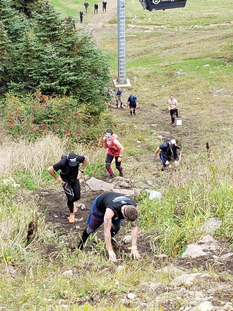 Any extra gear? Trail running shoes, gloves, and knee and elbow pads. Conclusion: This was an enjoyable race and Kristi recommends it for anyone who is up for a new challenge! “An athlete looking for a sport that requires team building, but is also very solo may enjoy OCR!” Congratulations to Kristi for completing not one, not two, but THREE of these races for a “Trifecta” this year (a 3 mile “sprint,” a 8-9 mile “super,” and a 13.1 mile “beast”). 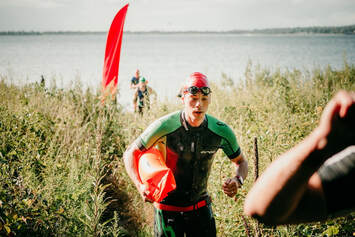 Odyssey SwimRun featuring teammates Scott Kallgren and Mark Murakami What is it? As the race name indicates, you swim, and then run...over and over and over again. The website explains it this way: "As a swimrun, The Odyssey is meant to be a different kind of multi-sport endurance competition: it challenges athletes to switch between disciplines over and over. Both running and swimming are inherently simple; body versus terrain. This event is meant to celebrate that simplicity, and give athletes a chance to test themselves against either 2 or 4 hours of this beautiful loop-style course." That’s a lot of loops! Why did you decide to sign up for this race? Mark says “The Odyssey provided a novel opportunity to push my distance limits in the swim as well as to work on cross-discipline transitions, which I need for triathlon. I also seize any chance I have to spend a summer weekend in Bristol with friends.” And, inspired by his teammate/training buddy Mark, Scott signed up too! Did you need any extra gear? The short answer: yes. The long answer:
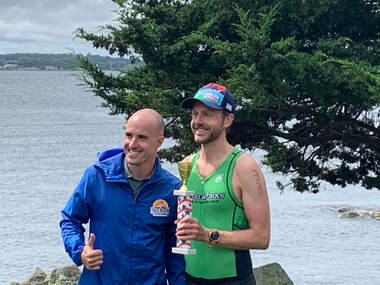 How was your training for this race different than training for a regular triathlon? Scott says he made sure to train with all the gear he would be using for the race in the Upper Mystic Lake. He notes that onlookers were confused by all this back and forth swimming and running! Mark adds that these swim-run training loops in the Mystic was useful, but that it would have helped to better approximate the race distances to complete more laps. Conclusion: Scott describes this race as “weird, but would definitely do it again!” He says that the constant cardio with recurring complete switch between upper and lower body was was really interesting, and the "only full loops count" aspect made him push really hard to finish a fifth lap in 1:59:30, just under the 2-hour mark. Mark adds: “Summer. Bristol. Start cannon (yes, a real one). Enough said.” They recommend it for anyone who likes rugged shorelines, swimming, running, and trying something different! Scott has his eye on the Boston Harbor Islands next year - anyone interested? Congratulations to Scott for 1st place overall in the 2-hour race, and congratulations to both Mark and Jon Chesto for strong finishes in the 4-hour race. As the season rolls along, I’ve been thinking about what exactly makes a team. To state the obvious: triathlon is an individual sport. When I first started thinking about completing my first tri I had no intention of joining a team. It can be risky and vulnerable to put yourself in a new situation with people you don’t really know, and I wasn’t entirely sure what I would get out of it. But as a new teammate last year, I felt immediately welcomed and at home here, and I’ve been thinking a lot about why. Beyond our snazzy green uniforms and shared obsession for Teddie’s pb, I think our team is united by the following: Celebrating your accomplishments. Whether it’s nailing a tough workout, participating in a new race distance, making the podium, or taking an especially artistic selfie, this team shows each other so much love and support! While our non-athlete friends and family certainly support us (read: tolerate us) and cheer us on, there’s nothing quite like a fellow triathlete’s genuine enthusiasm for their teammate’s accomplishment! Supporting you through setbacks. We’ve all been there - missed out on a time goal, DNFed, cursed with an injury. I’ve witnessed many a candid conversation about the frustrating side of the sport. It’s great to have the opportunity to air these frustrations to sympathetic ears who can offer understanding, support, advice, and perhaps serve as a voice of reason when we get a little carried away. People to work out with. Okay, this is obvious - we train together. However, while most of us are pretty self-motivated, don’t underestimate the power of a training buddy (or 10!) It seems that just about every group workout I attend includes someone doing just a *little bit more* just a *little bit faster* thanks to the encouragement of teammates! Personally, I have been especially grateful for the many opportunities to work on my biking in low-pressure, no-drop rides or in our easy-to-follow weekly Marauding and Training Tri Mystic loops. I’ve also met a lot of new (and veteran) teammates this way. An experienced knowledge base. Our email and facebook group are abuzz with questions and answers - gear, technique, PTs, routes, races, training plans - you name it, we collectively have several dollars worth of two cents about it. With the ridiculous amount of information and choices out there on the interwebs, this is an incredible resource to have. Plus, there’s no judgement for asking when you don’t know something, which is great for us newbies. Beyond the Q&A, several events put on by the team really put this principle into practice. In my relatively short time on the team we have had swim technique clinics, a bike pace line demo, a bike maintenance clinic, a transition clinic, a run technique workshop, not to mention weekly teammate-led workouts where I have learned about track sets, open water swim techniques, and so much more. I really appreciate the culture of teaching, learning, improving, and embracing all experience levels. Balance. Like all athletes, we are competitive. We sometimes wake up at insanely early times to do insane things with our bodies. From the average person’s viewpoint, this might make us seem a little unwell. But we still wanna have fun! We go on cider-donut rides, hang out at socials, indulge in Jack’s Abby after our training, plan our bike routes around ice cream stops (oh wait, is that just me?), and let’s not forget our annual “anti-training weekend!” It’s nice to be surrounded by others who appreciate this balance and to feel included in both the training and the fun. To new and returning teammates this season, I am glad to be a part of this with you! Now, sentimental blog post aside - let’s race!
Amy  Last April I walked into WWMS Tri Night with no idea what to expect. Although I knew I wanted to do my first triathlon that summer and had been invited to check out Wheelworks by some friends, I wasn’t totally sold on joining a team. The interior of Belmont Wheelworks was overwhelmingly stuffed with bike gadgets and paraphernalia - intimidating for someone whose cycling career up until that point consisted of learning how to ride a bike around age seven and not pursuing it much since then. I spent a few awkward minutes wandering around and trying to keep track of all the people I was meeting, but the night turned out great. I met a ton wonderful people and decided to join the team!  My most vivid memory from that night was the Caitlin Clavette Memorial Foundation Awards. Listening to the Clavettes speak about their daughter, I was touched by descriptions of Caitlin and the relationship between the team and the Clavette family forged in Caitlin's memory. The foundation sponsors race entries for Wheelworks Multisport teammates who support the foundation's vision of a community where all people live healthy lives, preserve and appreciate the arts, respect and protect all living things and live with passion. In my mind, the sense of welcoming I experienced that night, and continue to experience as part of this team, is inseparable from Caitlin’s legacy. I would venture to say that Caitlin may not have totally realized what a huge impact she had on others. I don’t know any of us ever realize our impact on others. The way this team, and each of us as individuals, welcomes and inspires each other is so special and meaningful. We are so much more than athletes (even when it literally feels like training is all we do). Our team is about building a welcoming community and helping individuals embrace new challenges. The foundation is offering race sponsorship for Wheelworks Multisport teammates to apply for once again this year, and I'm looking forward to learning more about all those teammates who apply and align with Caitlin's vision. 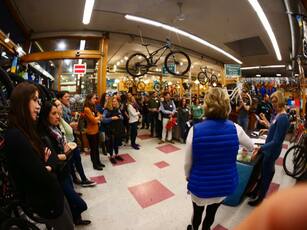 Teammate and past recipient, Leah Reis-Dennis, adds “It's easy to focus single-mindedly on triathlon when we're hanging out with WWMS teammates. I love that the Caitlin Clavette Foundation is explicitly more holistic, committing itself (and committing us) to remembering Caitlin for the multifaceted person she was: an artist as well as an athlete, a teacher, daughter, and sister as well as a friend and teammate. WWMS can continue to support this vision by encouraging its members to get to know each other as people and as friends—not just as teammates to sweat it out with on early morning rides.” 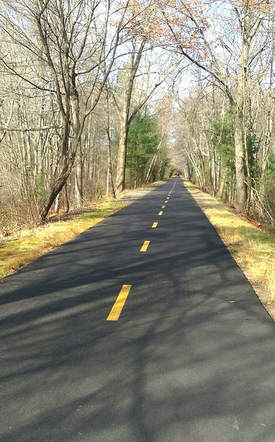 Hey green team, During a leisurely morning ride that circled “Concord*” via “the Minute Man trail*,” our teammate “Brian*” and I had an experience that reminded me once again of the overlap between Wheelworks life and our professional lives. Typically, when I join or convene a new team, one of our foremost exercises is to engage in norm-setting. On the surface, this elicits general responses: listen while others are talking, show up on time, don’t be late. Go a little deeper, and we start tugging at personal expectations: speak your truth, assume good intentions, maintain a safe space, practice bravery. One of the norms that tends to emerge part-way through is perhaps the most basic: act with respect. While we never officially penned Wheelworks team norms, I took a stab at what I imagine they might include:
Perhaps not all 8 are in play during every run, cycling loop, or swim, but for the most part: generally applicable. Ok, back to the Minute Man. As “Brian*” and I were spinning along, we came to a segment almost every Wheelworker has experienced: a cluster. Three people walking shoulder-to-shoulder in front of us; parallel, a couple pushing a baby carriage, two young kids running slightly ahead. Up ahead, a busy intersection. In between, more pedestrians. As we approached said cluster, “Brian” and I recalled both our previous rides and inadvertently, the norms above. Pop quiz: what did we do?
If you answered (c), you are correct. [If you answered (a) or (b), OMG why do you hate us?!] 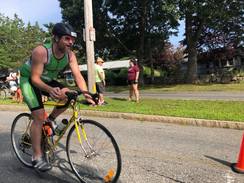 In this instance, the right thing to do was to slow down. Could we have sped up and/or shimmied between the pedestrians? Yes. Would it have freaked them out, and potentially endangered the kids? Also yes. It’s the concept of utilitarianism: the greatest good for the greatest number. We applied that here; the only people who would have benefitted from us speeding up was...well, us. Here’s Part 2 of the story. As we feathered our breaks, we noticed the pedestrians to our left turning around, reacting, and hurrying out of the way (which would have been the same reaction we caused if we sped up). We craned our necks to see what was coming our way, and what I saw was more disappointing than discovering the Rx bar I brought had expired: a group of cyclists, from a fellow tri team I will not name, chose option (b)--and married it with option (a). A handful of riders came whizzing down the middle, leaving scared walkers in their wake. “Brian” and I slowed further, signaling to those around us we would not do the same. Granted, our teams our different. We know that, and the riders who passed us know that. But the folks walking around us did not know that. Being a triathlete is a privilege--one that comes with the requirement to respect those inside our athlete community, as well as those outside of it. I was proud to be a WWMS member this morning; my hope is that the pedestrians remember the green top more favorably than the other color. It’s a good reminder about why we chose the team we did, and the norms we subscribe to by donning the Wheelworks name. Be safe, ride well, and we’ll see you on the trail! #gogreen, Julie *Actual name.  Hey green team, As we turn the page to August on our WWMS Calendar (shout out to Katrina Ladd, master designer), we’re deep into two things: humidity, and race season. When the heat kicks up, our pace slows down--but interestingly, I’ve noticed that the inverse is true for “sense of determination regarding workouts.” Some deem this “competitiveness,” but let’s stick to the positive. :) So as not to generalize, I’ll keep this post in the first person. When the sun shines outside my windows, a little voice pops into my head saying, “you should work out.” That’s often coupled with motivational messages on social media, such as facebook postings by fellow athletes (“Man it’s hot, but I got in my 27 mile run! Now I can eat a raisin!”), race reports, and photos of finish lines from across the globe. Often, because of my own internal competitiveness, the nagging voice wins out. I’ll hop on the bike, or tug on my running shoes, or wander over to the pool/Mystic/Walden for a swim. I feel awesome after. I’ll take a selfie and send it to my mom, who inevitably states the obvious: “Um it’s 92 degrees and you are RUNNING?! Are you crazy?!” Me: “It was only three miles.” Pause for a second on this. 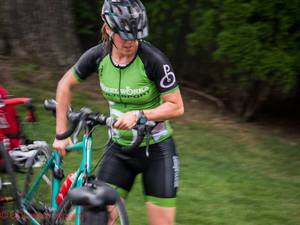 A few weeks back, I was privileged to teach a session on Women in Academic Leadership to college presidents, deans, and executive directors from institutions across Asia. The first thing I asked them to do was to share their role. I expected, “Hi I’m <name>, and I’m the President of <institution>.” That happened the first 2-3 times. From there, the narrative changed slightly: “I’m <name>, and I was asked to be President of <institution>. I’m really not qualified, but I was the only person available.” “They just didn’t have anyone else.” “I’m only two years in, so I need to learn how to lead.” And so on. After 10+ women shared a similar story, I stopped the class. I said to them, “Let me reflect something I’m hearing. You keep saying “only...” and “just..”. Please don’t forget that you EARNED your jobs. It’s not “just” that you happened to be there. You are brilliant, accomplished women. You weren’t handed a presidency. You earned a presidency.” The room was silent for about 10 seconds before one soft spoken women whispered, “thank you.” As I think about these two scenarios, I realized “only” and “just” applies across boundaries. We athletes have holy grail races to celebrate--for example, Ironman, which certainly deserves to be celebrated. Finishing this race is a feat accomplishable by a very small number of humans. To those who crossed those finish lines this summer: you are rock stars, and we commend you for that tremendous amount of work. 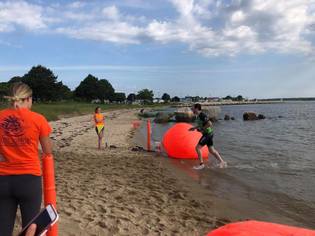 That said, our ability to meet goals for smaller, shorter races should not be diminished. As illustrated by the women in class, their sense was that they were “just” available--somehow, their accomplishment didn’t count. Their training didn’t count. Their work, their dedication, their sacrifices didn’t count. So to all those WWMS teammates who sometimes feel what I feel: “only” three miles is still three miles. “Just” a Sprint, or an Olympic, is a heck of a lot when you stand on the other side of the classroom. I never finish in the top three, and I likely never will. People who run without shoes and bike in their sneakers instead of bike cleats still beat me. But you know what? I finish. So in the end, remember: your training matters, and more importantly, your dedication to training for three distinct sports matters. It’s never “only” or “just.” It’s a triathlon. And no matter how many miles you swim, bike, or run: you deserve the kudos. Train well, and #gogreen! 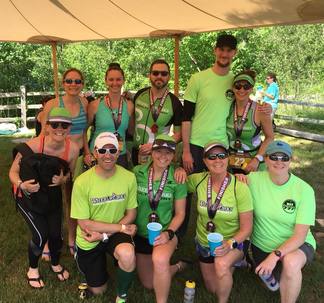 Hey green team, With the first days of June upon us, the weather is nicer(ish), the days are longer, and of course: we can train outside. It’s also the most joyful season for those attending one of the 60+ colleges and universities in the Boston area, known to some as “OMG I cannot drive ANYWHERE AROUND HERE OMG” and to others as simply “Commencement.” What does Commencement have to do with triathlon, you ask? Well, for one, it’s literal: commencing. For we Wheelworks crew, it’s the start of another season of swimming, biking, and running toward finish lines (or at least toward brunch). For others, it’s the commencement of a new life, a new job, a new identity. These two notions intersected one May morning for me, which made me think about how our identities can be molded by the suits we wear--and more importantly, how “commencement” applies to all who engage. For those who don’t know, my day job brings me to a local university, and I am fortunate to work with some of the most brilliant, inspiring folks around. Every Commencement morning, I dust off my cap and gown, shrug the robes over my shoulder, place the hood over my head, and don a bright blue velvet hat my dad affectionately deemed “fuzzy blueberry.” I process onto the stage; I cheer for students as they cross. And then, just like that, they go onto their new lives, and my regalia finds its home in a garment bag once more. This year, following Commencement exercises, I immediately changed into running gear. Gone was the blue velvet, the floor-length garments, the matching hood. In fact, I wore the opposite: light colors, light fabrics. As I began the slow motion of revolving legs, I noticed that my colleagues didn’t stop to say hello. Students with whom I posed for photos just an hour ago walked right by. It seemed my whole identity shifted simply by changing my clothes. 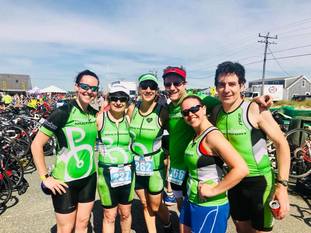 Taking this one step further, I recently tried on my favorite green tri kit--mostly to see how it fit, but also to remind myself to swap that daily half box of Cheerios for vegetables. It occurred to me that this too is an identity shift: from trainer to racer, from individual triathlete to WWMS collective. It’s not just what we wear, it’s the way we operate; riding up mountains in freezing rain (#trainingweekend), swimming in a choppy ocean, running in conditions from snow to heat. In the same way regalia does not make someone an academic, the tri kit doesn’t make you a triathlete: YOU do. That fierce determination makes our bodies move, but remember too that you are part of a team. The real motivation to get up at 6AM on a Saturday is knowing that friends are waiting; that if the ride goes from “slightly chilly” to “I can no longer feel my feet,” you’ll keep going because you’re not alone. So the next time someone asks why you’re tugging on calf sleeves to go running during lunch, remember: you get to choose that identity. And we all chose one we share, one we get to carry with us during every race. We are members of the most determined, supportive, and downright amazing team of athletes around. We wear our green proudly, because it reminds us we are never alone in the triathlon world. Train well, and we’ll see you at the next race! #gogreen, Julie 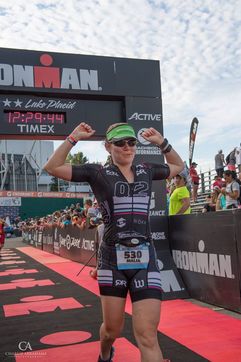 Hey green team, It’s April in New England, which must mean: it’s still snowing. That said, summer is coming, and with it: open water swimming! For all the newbies (or us old-bies) who see “open water swimming” and have mild heart palpitations, remember: it just takes practice. Take it from this month’s guest blogger Malia, who shares her powerful story below. “I remember my first triathlon as if it were yesterday. When you feel you’ve survived a near death experience, those memories tend to stay with you. Okay, maybe it wasn’t “near death”, but I can at least say I felt like I might die. I thought I had trained for my first triathlon. I swam in a 15 yard pool, I could ride a bike, and I have a running background. Doggy paddling was always my backup plan for the swim. A friend who had done one triathlon before gave a lesson on how to transition. I was ready! The morning of the race I donned my rented wetsuit. I swore mine was way too small. The neck line was choking me, I was pretty sure it was going to compress my trachea. How were my lungs going to expand?! I had registered for the ‘Beginner’ wave of the race and was given a hot pink cap. I headed down to the beach donning my new cap. We got instruction that it was a point to point race and we would stay on the right side of the buoys. There were kayakers available to help us if we needed them. If at any point we wanted to quit we just had swim to shore. We headed out onto the dock and one by one jumped into the water, ‘Oh my God that’s cold!!!!’ I felt my lungs and every muscle tense up. I slowed my breathing enough for the gun to go off. Bang! I stuck my head in the water tried to swim, ‘I’m not moving!...Everyone is splashing me!...I can’t see where to go!...This tastes awful!....The waves are crashing into my face!’ After about 2 freestyle strokes I started doggy paddling to shore. ‘I’m not dying today! I’m getting the heck out of here!’ (Un)Fortunately, one of the kayakers told me I was going the wrong way, ‘No I’m not!’ I responded. Then this person wouldn’t let me go to shore! I therefore attempted to move my body with with a doggy paddle/breast/side stroke combination and somehow managed to get to another kayaker. They had one of those red lifeguard rescue buoys floating in the water. I latched on for dear life. I’m not sure how long I stayed. I didn’t want to let go, but I was encouraged by this lifeguard to continue on my journey. So I did. I somehow managed to get the courage and doggy paddle-side stroke to the next lifeguard and repeated the process with the buoy. By this stage in the race, as you can imagine, there weren’t many people left in the water. This gracious lifeguard told me that she would follow behind me all the way to shore. I started out side stroking again, she cheered me on and told me I could do it. It was at that point that I felt that I could get my whole body horizontal, put my head in the water and start to freestyle. She followed me all the way to shore. I don’t remember hitting the sand, but I remember I felt relieved. I remember I enjoyed bike ride and I somewhat remember the run. My swim time was the 2nd worst time posted for the day, but finished my first triathlon. For some strange reason, despite that swim, I wanted to do it again. I knew I could do better. For years and races that followed I continued struggling my way through the swim. Through panic attacks and actual feelings that I might drown. So how did I progress to the point of finishing more triathlons than I can count on two hands? - I got my feet wet. I started swimming and swimming in a 25 yard pool. - I talked to a lot of people about my fear, anxiety and inability to move myself through the water. These people helped me develop workouts and encouraged me to take lessons... - I got lessons. This made a huge impact on my balance in the water. It also helped me become more comfortable in the water and address overuse shoulder injuries. - I watched videos of swimmers, read articles and books. - I started open water swimming with friends/teammates. It helped to get used to spotting and to not being able to see the bottom. - I joined a Masters group. I think that this was the single most valuable thing I ever did as far as my swimming career is concerned. I had someone giving me daily workouts and I had to swim with other people surrounding me. - I practiced swimming in a wetsuit. I’d swim in it as often as I could to get used to the compression at my neck. - I use(d) visual imagery techniques. This is how it works: Imagine standing on the beach of your race in your wetsuit compressed on you. Imagine standing in a large clump of adults in black suits and all the nervous energy. Feel that you need to pee again even though you’ve already gone three times! Feel walking up to the water’s edge, crossing over the timing mat. Feel wading in the water. Hear the sound of the gun going off and the splashing of all the other swimmers around you. Think about what you are going to do to handle yourself in that situation. Will you swim with them or hold back a bit and let them get ahead of you? How will it feel to start sighting your buoys? Imagine every possible scenario (both the positive and negative) and play it over in your head before going to bed at night. When the time comes when you are living the experience, it won’t feel like the first time, because you’ve already visualized it happening so many times before it has. Reflecting on my personal transition from anxious newbie to advice-giving triathlete is an interesting experience. It doesn’t feel like it was that long ago, but there was a process that took place over a few years. Here’s my best advice: prepare for it. Physically, mentally, emotionally. And at the end of the day: even if you’re second to last in the swim, you still cross that finish line. PS: That first wetsuit I thought I was going to die in? I now own it and have done nine half Ironman and two full Ironman races wearing it! It will be retiring this season for a newer (hopefully) faster model.” See you at Walden, friends! #gogreen, Julie 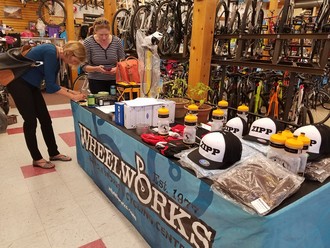 Q: Where's the best place in town for great food, delicious beverages, awesome giveaways, raffle prizes, and mind-blowing triathlon trivia? A: Wheelworks Tri-Night! Join us on Sunday, April 8 (6-8PM) at Wheelworks Belmont for our annual multisport celebration. All are welcome - teammates, prospective teammates, and triathlon enthusiasts who simply enjoy spectating and cheering! The event features a Q&A with USA Triathlon representative Ron Franklin, TriTrivia with fabulous prizes, and the big announcement of our Caitlin Clavette Memorial Foundation sponsorship recipients. And of course: snacks. Prizes include, but are not limited to:
Ready to raffle?! The more you buy, the more you win - and there is a LOT to be won! Funds go to support the Wheelworks team, but more importantly, to support larger events like this. Tickets can be purchased here. See you - and hopefully your new Tifosi shades - on April 8! |

